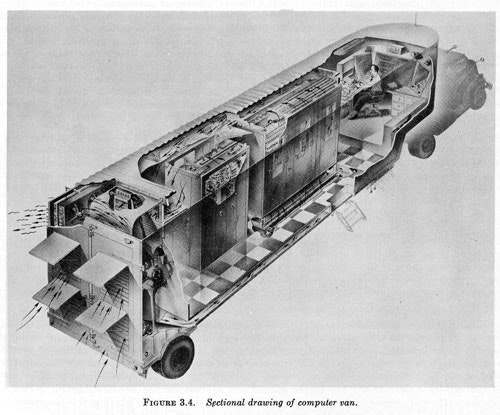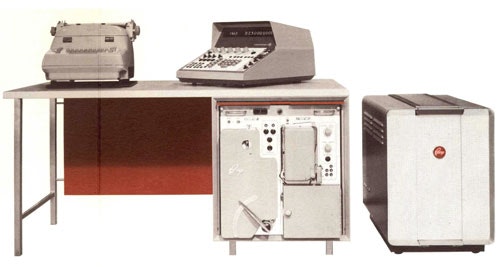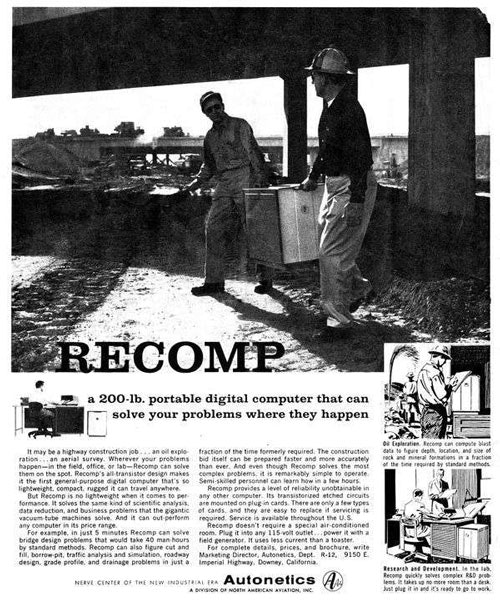Tedium - Camper Van Mainframe 💾
|
|
|
|
|
|
|
|
|
|
|
Older messages
When Newsletters Were Printed 📬
Friday, August 12, 2022
What digital newsletters can learn from printed newsletters. Here's a version for your browser. Hunting for the end of the long tail • August 10, 2022 Today in Tedium: Some might say that peak
Who Sets the Prices? 🏷
Saturday, August 6, 2022
Why manufacturers often suggest prices for the products they sell. Here's a version for your browser. Hunting for the end of the long tail • August 05, 2022 Today in Tedium: Why do prices on new
When Movies Get Canned 🎥
Wednesday, August 3, 2022
Movies that, like Batgirl, never saw release despite being complete. Here's a version for your browser. Hunting for the end of the long tail • August 03, 2022 Today in Tedium: If you were holding
A Bit of Fine Tuning 🎸
Saturday, July 30, 2022
Ever try playing a guitar with a touchscreen? We have. Here's a version for your browser. Hunting for the end of the long tail • July 29, 2022 Hey all, Ernie here with a fresh piece from David Buck
The Codecs of Streams Past 📹
Wednesday, July 27, 2022
The video file formats that didn't make it. Here's a version for your browser. Hunting for the end of the long tail • July 27, 2022 Today in Tedium: So much of the content we experience on the
You Might Also Like
Daily Coding Problem: Problem #1695 [Easy]
Thursday, February 27, 2025
Daily Coding Problem Good morning! Here's your coding interview problem for today. This problem was asked by Google. Given two singly linked lists that intersect at some point, find the
Joining Strings, MongoDB in Django, Mobile Wheels, and More
Thursday, February 27, 2025
How to Join Strings in Python #669 – FEBRUARY 18, 2025 VIEW IN BROWSER The PyCoder's Weekly Logo How to Join Strings in Python In this tutorial, you'll learn how to use Python's built-in .
JSK Daily for Feb 18, 2025
Thursday, February 27, 2025
JSK Daily for Feb 18, 2025 View this email in your browser A community curated daily e-mail of JavaScript news Meet Harmony An open source library for composing consistent and highly performant
Software Testing Weekly - Issue 258
Thursday, February 27, 2025
The End of Programming? 🤔 View on the Web Archives ISSUE 258 February 18th 2025 COMMENT Welcome to the 258th issue! Some people fear that AI will replace software engineers, including testers. However,
The Sequence Engineering #493: One of the Best Agent Frameworks in the Market Just Got Way Better
Thursday, February 27, 2025
The new version adds a considerable set of capabilities for a more integrated agent development experience. ͏ ͏ ͏ ͏ ͏ ͏ ͏ ͏ ͏ ͏ ͏ ͏ ͏ ͏ ͏ ͏ ͏ ͏ ͏ ͏ ͏ ͏ ͏ ͏ ͏ ͏ ͏ ͏ ͏ ͏ ͏ ͏ ͏ ͏ ͏ ͏ ͏ ͏ ͏ ͏ ͏ ͏ ͏ ͏ ͏ ͏ ͏
Trojanized Game Installers Deploy Cryptocurrency Miner in StaryDobry Attack
Thursday, February 27, 2025
THN Daily Updates Newsletter cover ⚡ LIVE WEBINAR ➟ Building Resilient Identity: Reducing Security Debt in 2025 Attacks Evolve, So Can Your Defenses--Learn How to Mitigate Risk and Optimize Identity
Post from Syncfusion Blogs on 02/19/2025
Thursday, February 27, 2025
New blogs from Syncfusion ® Track and Visualize your Product Sales Data with the .NET MAUI Bullet Chart By Tinesh Kumar Sivakumar This blog explains how to visualize product sales performance using the
10 Ways a Zero Trust Architecture Protects Against Ransomware
Thursday, February 27, 2025
Learn how zero trust defends against ransomware at every step of the attack chain. ͏ ͏ ͏ ͏ ͏ ͏ ͏ ͏ ͏ ͏ ͏ ͏ ͏ ͏ ͏ ͏ ͏ ͏ ͏ ͏ ͏ ͏ ͏ ͏ ͏ ͏ ͏ ͏ ͏ ͏
⚙️ Grok 3
Thursday, February 27, 2025
Plus: An autonomous scientist in space
Download your Kindle books ASAP 📚
Thursday, February 27, 2025
Open-source Grok?; Laptop price hike; Windows mini PC -- ZDNET ZDNET Tech Today - US February 19, 2025 main Download your Kindle books ASAP - before Amazon kills this feature next week The clock is






